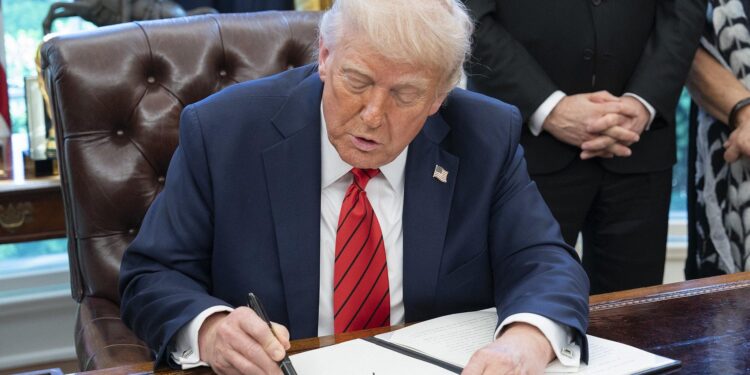In a significant shift affecting global trade and customs enforcement, President Donald Trump has signed an executive order terminating the longstanding de minimis exemption for imports from countries outside certain favored nations. The move, announced late Monday, eliminates the threshold that previously allowed low-value shipments from the rest of the world to enter the United States duty-free and without stringent customs scrutiny. This policy change, detailed in The New York Times, is expected to impact millions of international consumers and small businesses by increasing costs and administrative burdens, while reflecting the administration’s broader push to tighten trade controls and protect domestic industries.
Trump Executive Order Eliminates De Minimis Exemption Impacting Global Trade
The recent executive order signed by former President Donald Trump marks a significant shift in U.S. trade policies by eliminating the de minimis exemption for shipments originating from most foreign countries. This exemption previously allowed low-value goods-typically under $800 in declared value-to enter the U.S. duty-free and without extensive customs procedures. With its removal, importers and exporters across the globe now face increased scrutiny, added customs declarations, and potentially higher costs, complicating small-scale international trade and e-commerce transactions.
Key implications of this policy change include:
- Increased compliance requirements: Importers must now declare shipments more rigorously, even for low-value parcels.
- Potential rise in duties and fees: Goods once exempt may now incur tariffs, affecting pricing and supply chains.
- Impact on global e-commerce: Small businesses leveraging affordable international shipping may see operational challenges and delays.
| Previous Threshold | New Requirement | Effect on Shipments |
|---|---|---|
| $800 value limit | Full customs declaration for all shipments | More documentation, longer clearance times |
| Duty-free entry under exemption | Possible tariffs imposed | Higher import costs |
| Minimal enforcement for low-value goods | Heightened enforcement | Stricter compliance controls |
Detailed Implications for Importers and International Businesses
Importers and multinational corporations can no longer rely on the de minimis exemption for shipments originating outside the United States, radically altering the cost and compliance landscape for international trade. Previously, low-value goods shipped from abroad bypassed certain customs duties and fees; however, this executive order eliminates that threshold, meaning every item is now subject to tariffs and import taxes, regardless of value. Stakeholders must prepare for increased paperwork, longer clearance times, and heightened scrutiny by U.S. Customs and Border Protection (CBP), underscoring the need for enhanced logistics planning and budget adjustments.
The ripple effects extend beyond simple transaction costs, affecting supply chain strategies and vendor selections worldwide. Businesses may see higher operational expenses due to:
- Increased duty payments on previously exempt small-value shipments
- Expanded customs documentation requirements for each imported consignment
- Potential delays with shipments held for more rigorous inspections
To illustrate the new financial impact, consider the example below comparing costs incurred under the previous de minimis rule and the post-executive order framework:
| Shipment Value | Previous Duty Cost | New Duty Cost | Increase | |||||||||
|---|---|---|---|---|---|---|---|---|---|---|---|---|
| $50 | $0 | $7.50 | $7.50 | |||||||||
| Strategies for Compliance and Navigating Increased Customs Duties
Businesses affected by the new regulations must promptly adjust their import processes to ensure adherence to updated customs requirements. Implementing robust documentation protocols becomes essential, including meticulous record-keeping and transparent reporting to avoid potential fines and shipment delays. Companies are advised to collaborate closely with customs brokers to stay informed of tariff classifications, valuation adjustments, and compliance checkpoints introduced after the de minimis exemption was rescinded. Meanwhile, cost containment strategies require a strategic overhaul to address increased duties. Consider these approaches:
In RetrospectAs this executive order takes effect, it signals a significant shift in U.S. trade policy with potential ripple effects across global commerce. By eliminating the de minimis exemption for international shipments, the administration aims to tighten customs enforcement and increase revenue collection, but critics warn of increased costs and delays for consumers and businesses alike. Stakeholders around the world will be closely monitoring how these changes reshape import dynamics and the broader economic landscape in the months to come. |















![[News] Japan Develops 10nm Nanoimprint Technology, with Potential to Tackle EUV Bottleneck – TrendForce](https://earth-news.info/wp-content/uploads/2025/12/329851-news-japan-develops-10nm-nanoimprint-technology-with-potential-to-tackle-euv-bottleneck-trendforce-360x180.jpg)















